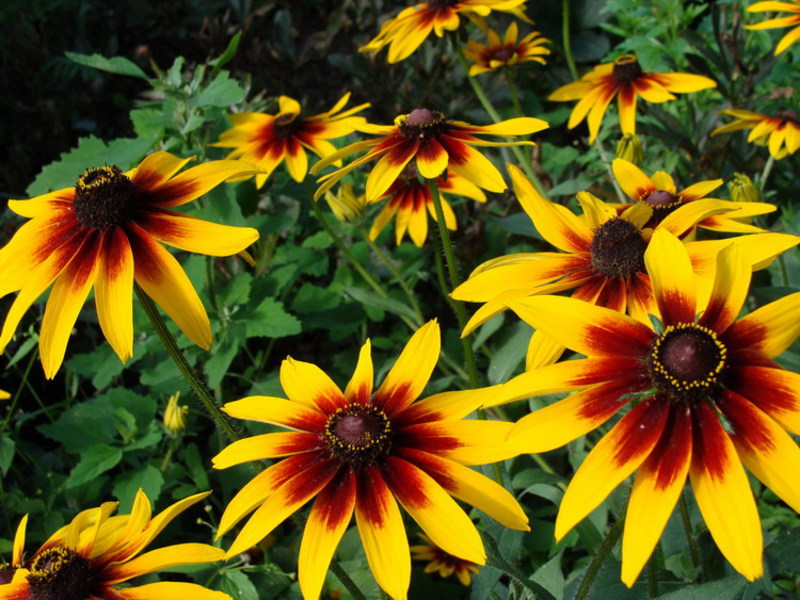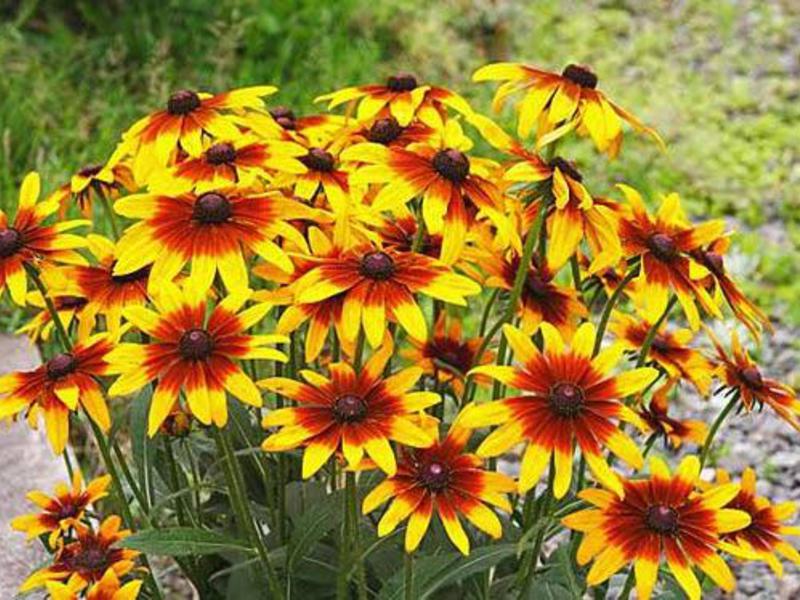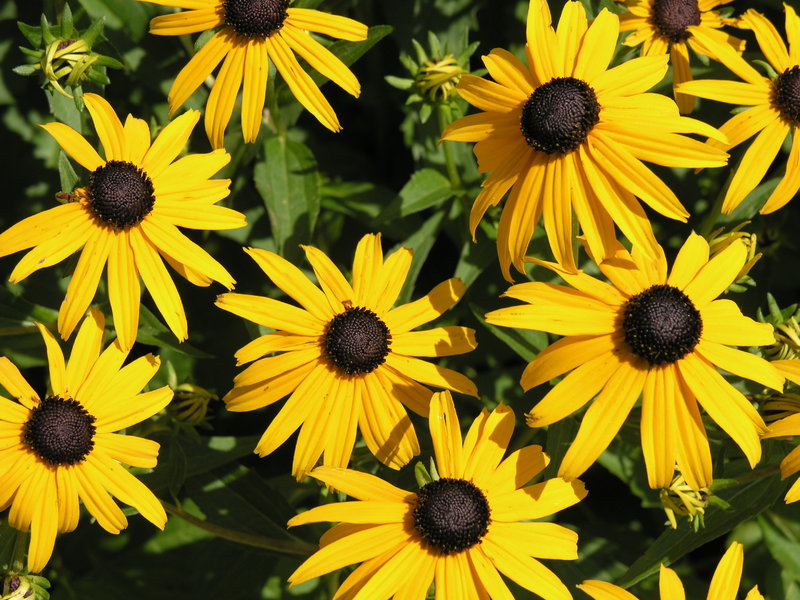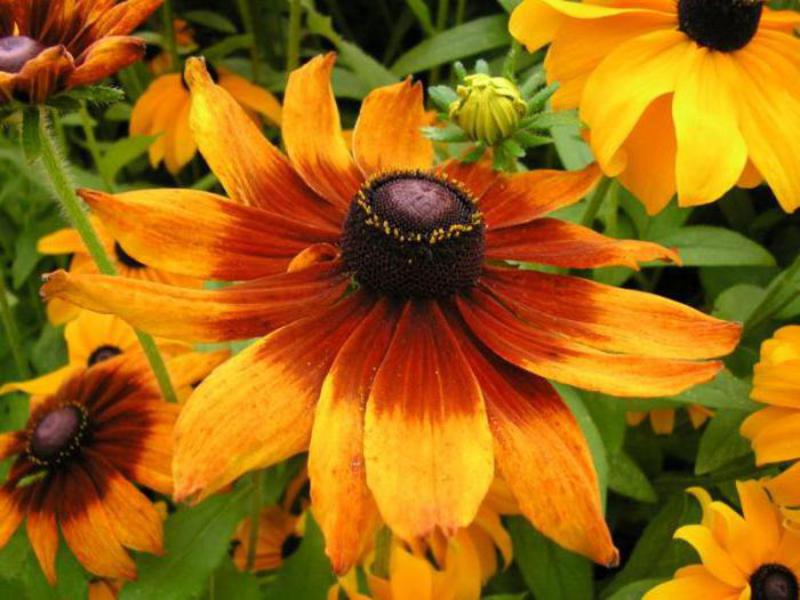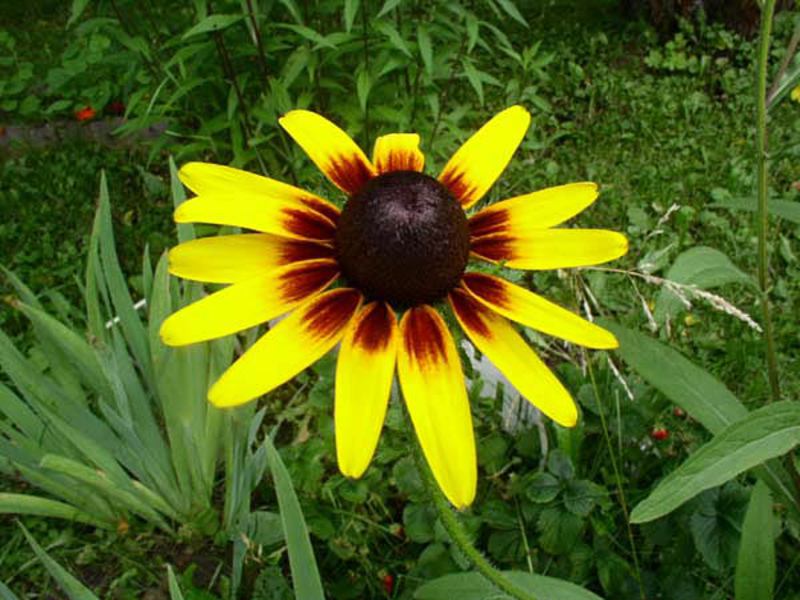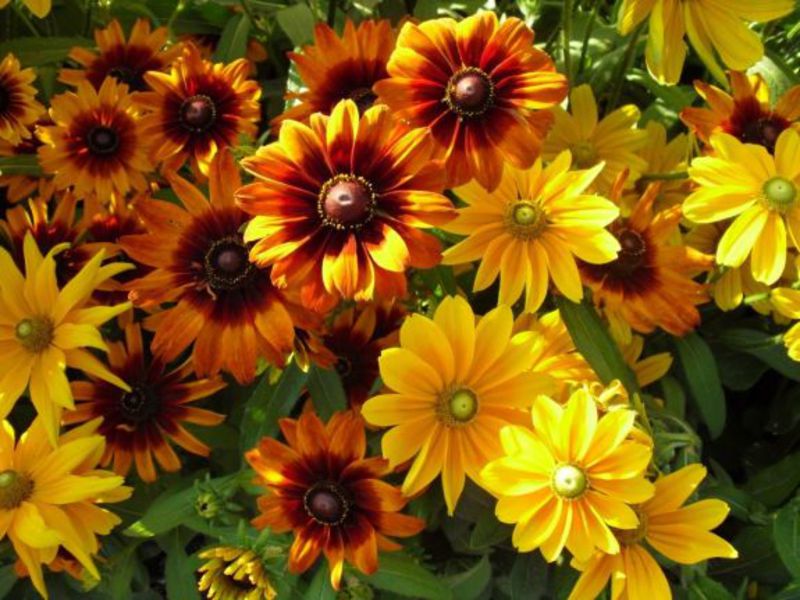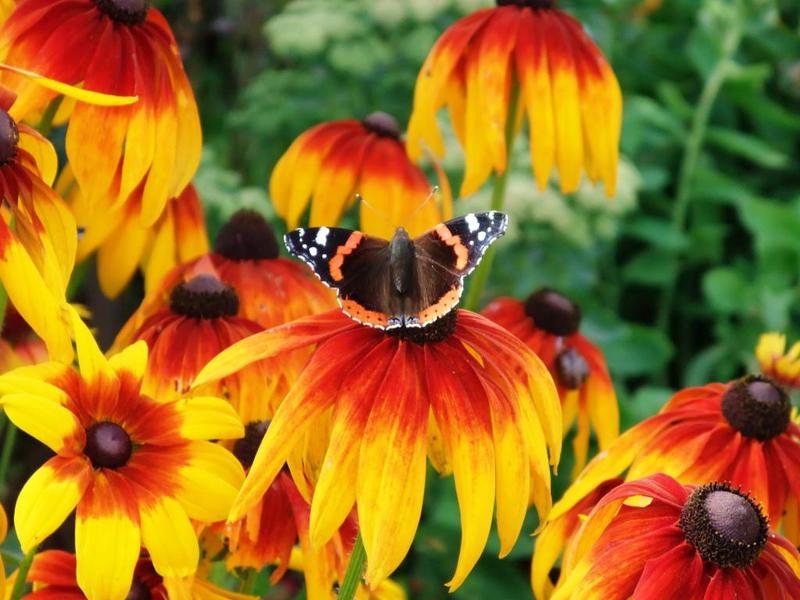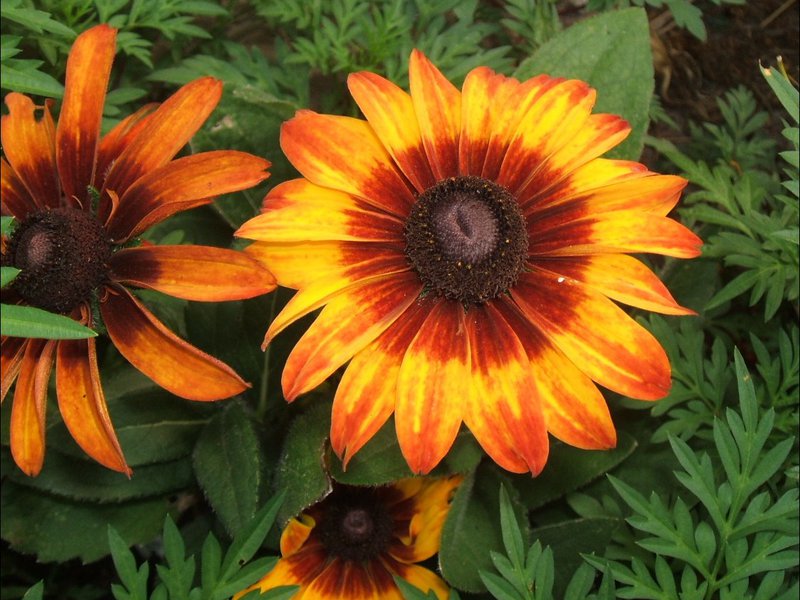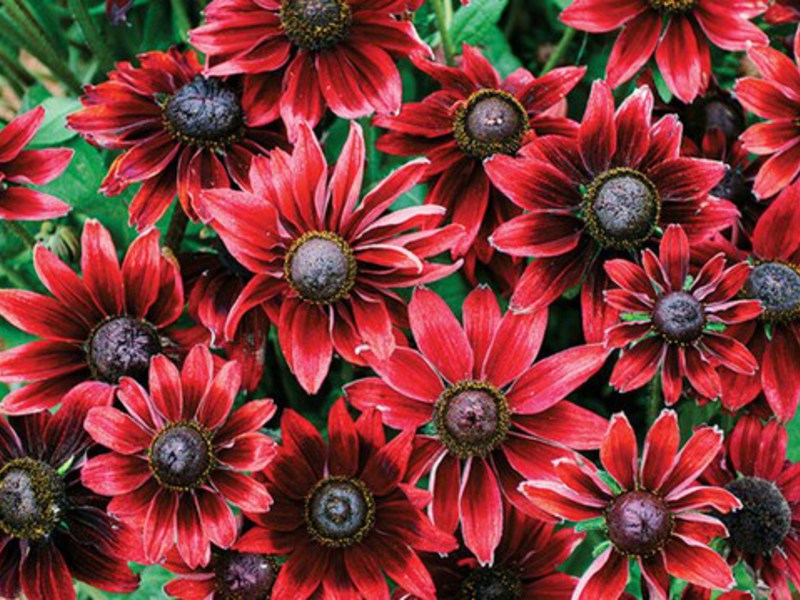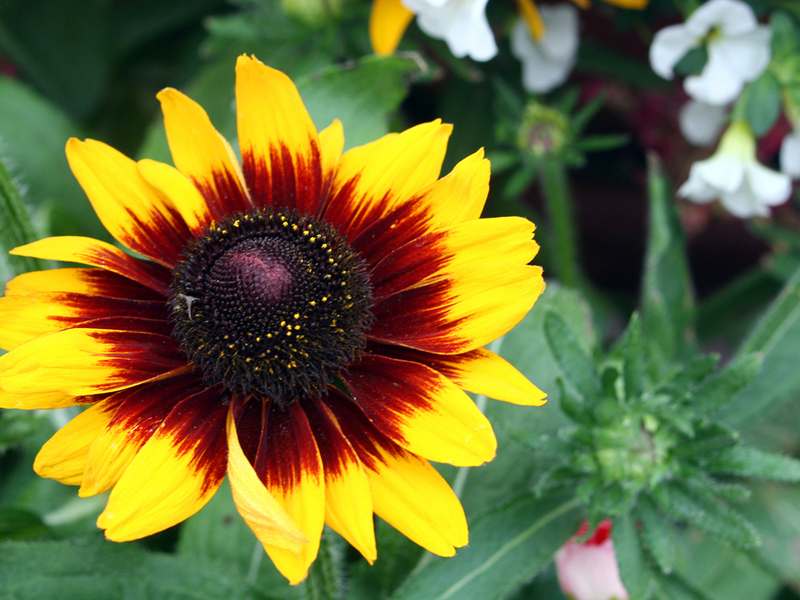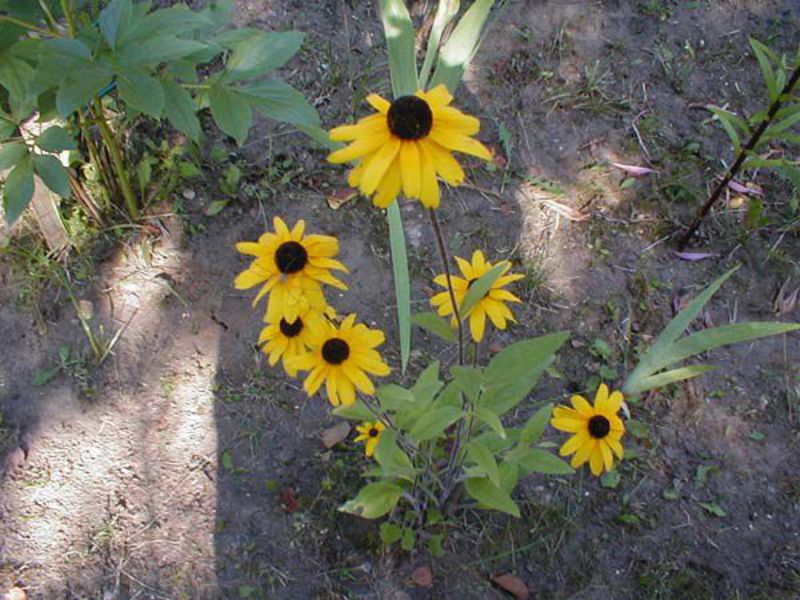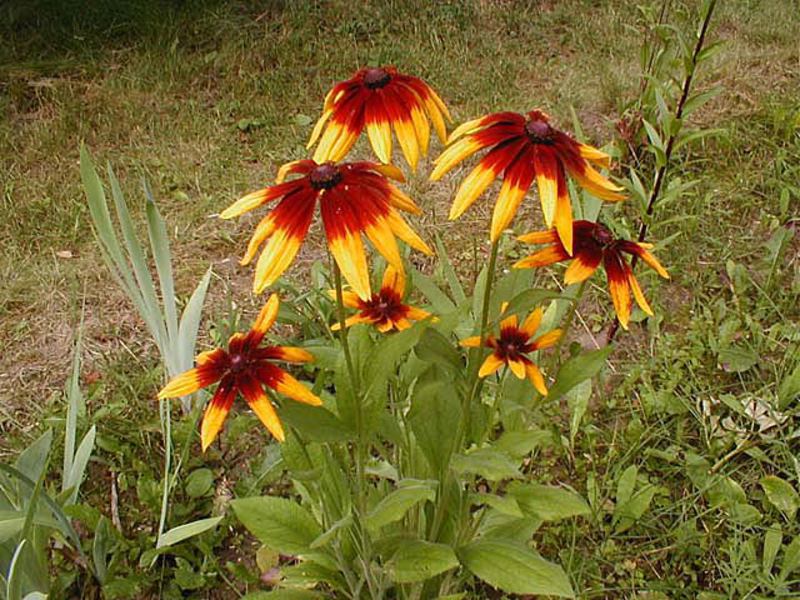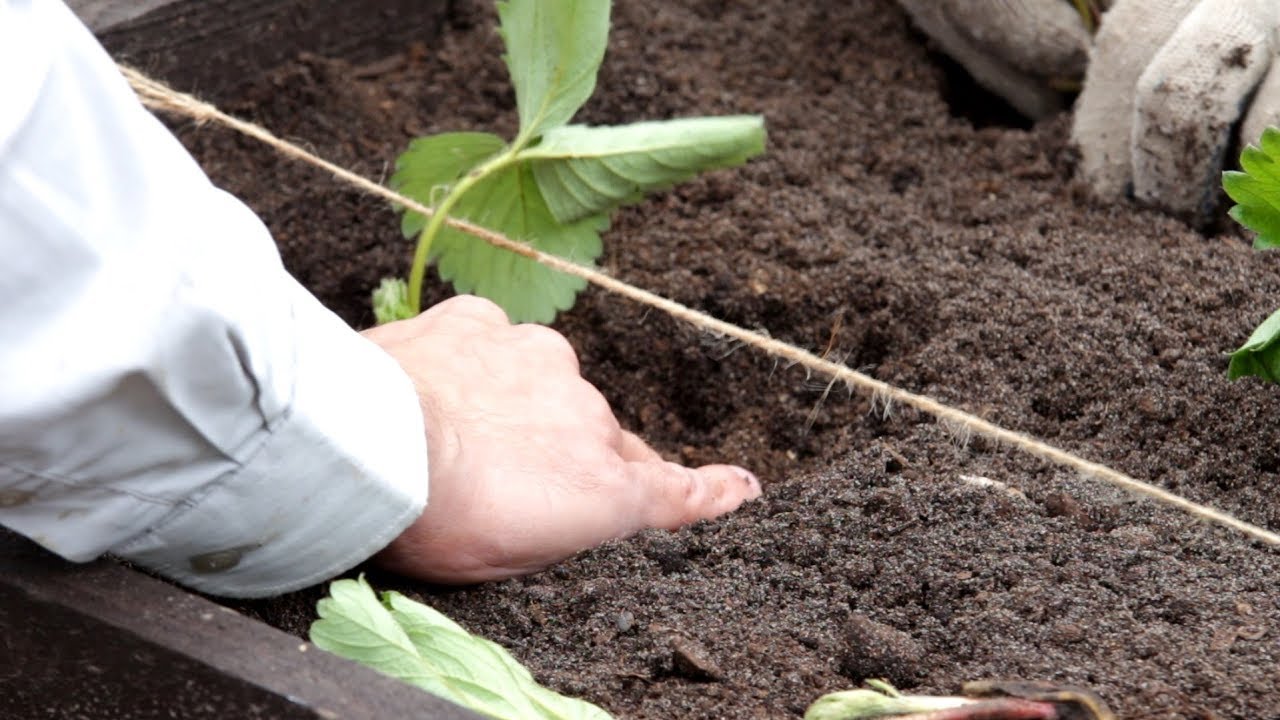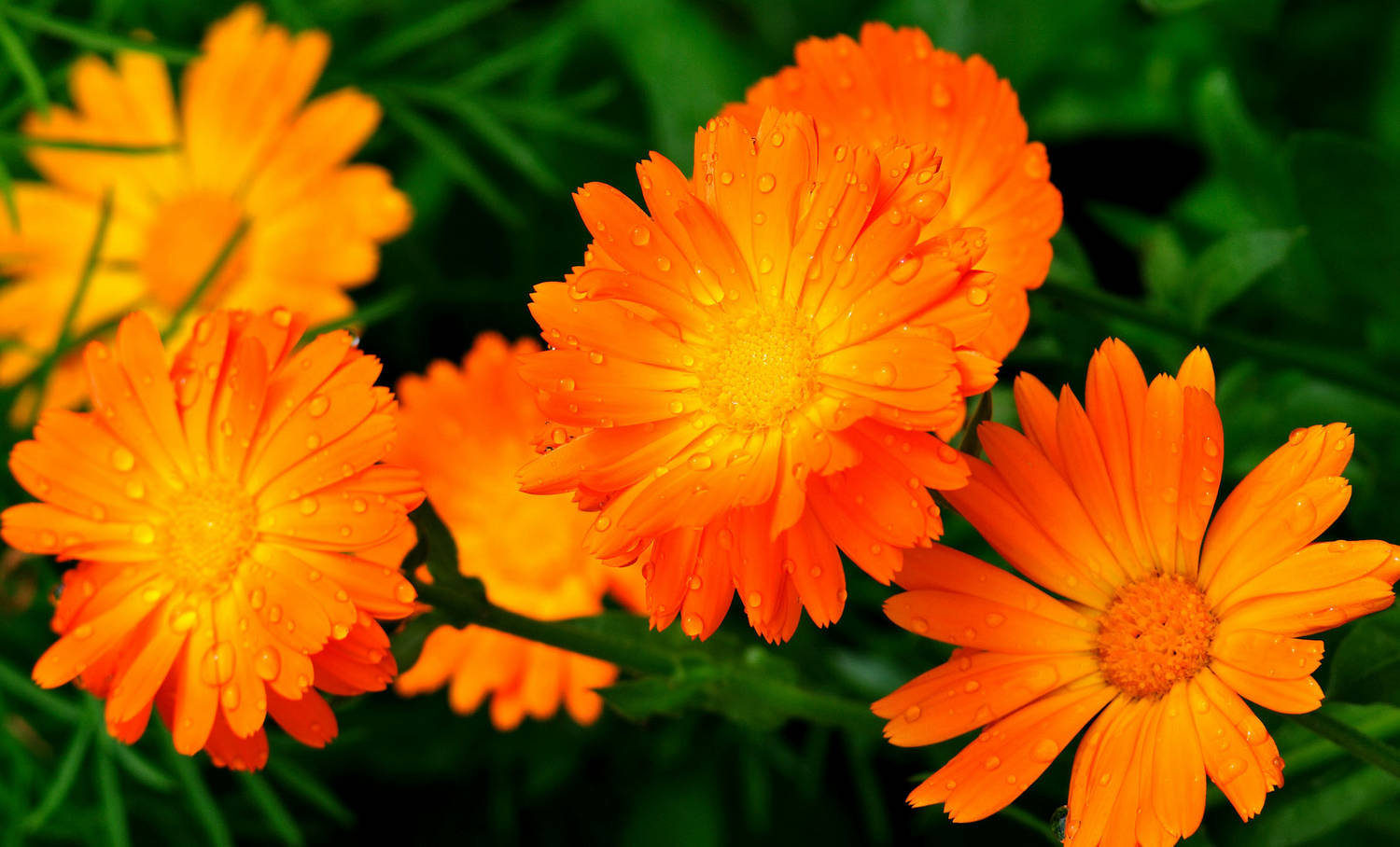A flower such as rudbeckia belongs to the herbaceous plants of the Astro family. Rudbeckia is native to the prairies of North America, where European colonists first saw it and were fascinated by its beauty.
In the material you will learn more about this flower, see photos of different species, find out what are the features of growing, planting and caring for these flowers.
Content
Characteristics of rudbeckia
According to the duration of growth, these flowers are:
- annual;
- biennial;
- perennial.
Depending on this, the methods of planting and growing them differ. They also differ from each other in appearance depending on the species. For example, the height of a rudbeck can reach 0.5 - 3 meters. The leaves of the plant can grow up to 20 cm and have ovoid or oval... The flowers of the plant are large and bright, their diameter reaches 10-15 cm, they are also collected in inflorescence baskets, rising with their heads up on a highly placed peduncle.
Lingual bracts, depending on the type of rudbeckia, can have different shades:
- golden yellow;
- plain;
- dark brown;
- reddish brown.
Classification of species
Consider below some types of rudbeck both annual and perennial:
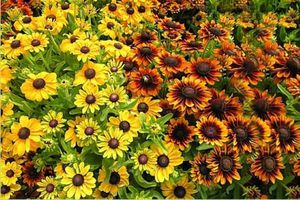 enveloping rudbeckia - this flower is annual, blooms from June to September. Has lowered petals, which, as it were, clasp the stem;
enveloping rudbeckia - this flower is annual, blooms from June to September. Has lowered petals, which, as it were, clasp the stem;- dissected (Golden balls) - perennial plant, blooming from July to August;
- glossy - perennial flower, blooms in July and August, has a light center;
- shiny rudbeckia - differs from the previous species in a dark brown center;
- sunshine - such a flower grows in the wild;
- hairy rudbeckia is an annual flower, on the basis of which many other decorative species have been derived. It blooms from early summer until frost.
Planting, growing and caring for annual rudbeckia
Unlike perennials, growing annuals is possible only from seeds. Seeds can either be planted in seedlings, or directly into open ground. Consider both planting methods.
Planting annual seeds for seedlings
In this case, landing should be held in early April... To do this, you need to prepare a large and shallow container, a greenhouse or small peat glasses. For the seed to germinate, the ground must be warmed up to at least 16 degrees. If necessary, the planting site is watered with hot water.
Next, the seed must be pressed shallowly into the ground by 3 mm or simply scattered over its surface, lightly sprinkled on top. After completing the planting process, you do not need to water the seed, just spray it. Rudbeckia seedlings are very sensitive to frost, so the planted seed must be brought indoors and covered with plastic or glass.
Sprouts should appear in two weeks. Before planting in a permanent place, they should be placed in the sun and watered regularly.Two weeks before this moment, the flowers begin to harden, taking them out daily, each time increasing the residence time.
With proper care, seedlings from the seeds of the annual rudbeckia are planted in open ground closer to summer. So that flowers in the future do not interfere with each other, you need between low bushes leave a gap of 50 cm, and between high - 1 m, respectively.
With this method of planting, rudbeckia flowers will bloom from mid-summer to mid-autumn.
Planting annual seeds in the ground
The seed of annuals can be planted directly into the ground in the middle of summer. Thanks to this method of growing, you will wait until the next season for flowering. Planting is carried out in the same way as for seedlings, only the distance should be greater.
Plant care for a given cultivation includes such activities:
- splashing;
- thinning sprouts;
- weed control.
Rudbeckia should be planted in a sunny area to ensure better flowering. High varieties are best planted along fences, and low ones - along flower beds and paths.
Features of planting perennial rudbeckia
 The perennial rudbeckia seed is sown directly into the open ground. Planting is carried out in May, if the region is too northern, then in June. The flower is not particularly picky about the soil, even a clay surface is suitable for it, but the garden bed for planting and growing a plant needs to be fertilized so that the flower grows quickly and is lush.
The perennial rudbeckia seed is sown directly into the open ground. Planting is carried out in May, if the region is too northern, then in June. The flower is not particularly picky about the soil, even a clay surface is suitable for it, but the garden bed for planting and growing a plant needs to be fertilized so that the flower grows quickly and is lush.
After planting the seeds, you need them on top sprinkle a little earth and spray a little with water. The plant will rise in the fall, then the seedlings can be dived to a permanent growing place. And if you planted flowers immediately in a permanent place, then they will bloom the next season.
Perennial seeds can be planted at home or in greenhouses for seedlings in the month of April. And they are transplanted at the end of May. At the same time, make sure that the planting depth in the open field is the same as in the container before.
Care features
Rudbeckia is a flower that is not too capricious in terms of caring for it and is distinguished by its persistence. For its comfortable growing care conditions are very simple:
- you need to water the flower on time. Rudbeckia loves moisture, but at the same time, a short drought will not be terrible for him either. Watering is increased during flowering;
- feed rudbeckia;
- pruning the plant. It is necessary to remove dead inflorescences in time in order to activate the long flowering of plants and preserve its attractive appearance. In winter, rudbeckia bushes are cut at the root and covered with spruce branches or dry grass so that the flowers do not freeze.
Top dressing and fertilizers
Rudbeckia treats fertilizers well. You need to feed her twice during the season. The first time this is done at the beginning of growth, when the root system is already slightly developed. For this, mineral fertilizers are used.
The second feeding is carried out after 20 days, here it is better to take a solution based on nitrophoska and Ross fertilizer.
Breeding features
Flowers reproduce not only through seeds, but also by division. The bushes divide approximately once every five years. With long-term cultivation in one place, the flower able to give good growth... Large bushes are dug up and neatly divided into parts. Delenki need to be planted in the garden with respect to the distance.
Reproduction of rudbeckia is best done before the plant enters the active phase of development. For example, in early spring or autumn after the plant has faded.
Dangerous diseases and pests
 Rudbeckia is practically not exposed to diseases, only sometimes the plant can suffer from powdery mildew, when a white bloom appears on the leaves and stems in the form of flour. For treatment, the flower is sprayed with a 1% solution of colloidal sulfur or treated with copper sulfate.
Rudbeckia is practically not exposed to diseases, only sometimes the plant can suffer from powdery mildew, when a white bloom appears on the leaves and stems in the form of flour. For treatment, the flower is sprayed with a 1% solution of colloidal sulfur or treated with copper sulfate.
Another disease characteristic of rudbeckia in rare cases is leaf nematode... With her, a brown heel appears on the leaves, provoking their wilting.To combat in this case, you need to use special preparations or remove the damaged part of the plant and burn it.
As part of caring for rudbeckia, you need to regularly check it for the presence of leaf-eating pests. Such types are dangerous for her:
- leaf-eating beetles;
- caterpillars;
- thrips;
- spider mite.
But all diseases and pests pose no danger to a flower if it is cared for correctly and on time.
Combination with other plants and application in design
In landscape design this flower is used in different varieties, for example:
- in the garden;
- near fences and fences;
- against the background of buildings;
- along paths and sidewalks.
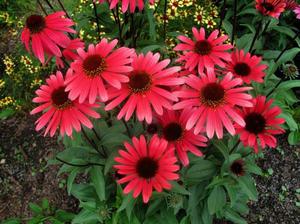 Growing in the garden gives their owners only pleasure, since rudbeckia are very unpretentious in caring for them. They will also delight your eye even in autumn, when other garden flowers have already faded.
Growing in the garden gives their owners only pleasure, since rudbeckia are very unpretentious in caring for them. They will also delight your eye even in autumn, when other garden flowers have already faded.
If you plant rudbeckia with other plants, but you need to take into account its dimensions. Some of its varieties can grow up to 2 meters, so this will not be good for the nearby light-loving plants.
High varieties that need to be tied up are best planted in the background of the compositions. They will look very impressive next to rudbeckia chrysanthemums and asters, original compositions will be obtained in combination with Echinacea purpurea.
Rudbeckia looks great both in mono compositions and in group plantings. Good combinations of them are obtained with such plants as:
- calendula;
- marigold;
- cosmeya;
- Gaillardia;
- nivyanik;
- monarda and others.
Both perennial and annual rudbeckia in terms of planting, cultivation and care will not give you significant trouble. They will make an excellent decoration for any site. If you all look after them correctly, these flowers will delight you even in autumn.
